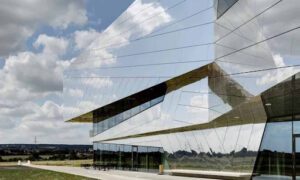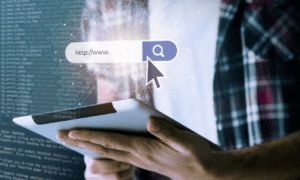Have you just come up with a big idea? Are you excited to launch it soon? Have you decided on its design, technology, and location?
But there’s one thing that you might have missed – how much will this cost?
I know exactly how overwhelming this can feel. You’ve got the passion, the drive, and a clear vision, but the uncertainty around project discovery costs can stop you before you even begin.
This is a common concern for entrepreneurs, and it’s where project discovery cost estimation becomes essential.
The discovery phase is where your idea takes shape. It’s where you define the core features, target audience, technology stack, and potential risks. Accurate cost estimation during this phase is key to avoiding unexpected expenses later.
This helps you understand:
- The core functionality of your product
- Who exactly are you targeting
- What technologies will be best for your business idea
- What will be the risks, and how can you mitigate them
By understanding these specifications, you’ll be able to set a realistic budget and prevent costly mistakes.
Let’s discuss why you need project discovery cost estimation, its components, and what factors affect the cost.
Why Estimating Discovery Costs Matters
Straightaway jumping to launch a software product without knowing the budget is risky. The discovery phase is your opportunity to understand what’s needed before investing heavily.
Accurate project cost estimation gives you the insight you need to determine:
- How much funding you’ll need: Knowing what you’ll need financially helps you plan your next steps, whether that’s bootstrapping or talking to investors.
- What resources will be required: It tells you what kind of expertise and tools you’ll need and where to focus your efforts.
- How to manage cash flow: A breakdown of costs helps you manage your budget across milestones.
- Project timelines and milestones: Understanding what’s involved helps set expectations for how long things will take and when you can launch.
Finding out the estimated cost of a project can be challenging for businesses, whereas a software product development service knows better. Depending on the tech stack and other features, they can provide a clear website development cost estimation.
Key Elements of Project Discovery Budgeting
The discovery phase typically involves several key activities that contribute to the overall budget. Here’s a breakdown of some important elements you should consider when developing your budget estimate:
The discovery phase is not just about research. It’s about:
- Setting a clear direction
- Reducing risk
- Avoiding costly mistakes
Every dollar spent here should answer one of these questions: What are we building? Who needs it? How will we execute it? Below are the core elements that shape your discovery budget.
1. Consulting and Research
Before any coding or design begins, you need to validate that your product solves a real problem for a real market. Strategic input early on helps define business goals, understand the competitive landscape, and align the product roadmap with user needs.
Where Your Investment Creates Value:
- Deep market and user research to ensure demand exists
- Competitive analysis to identify differentiation opportunities
- Business model evaluation to test revenue feasibility
- Expert advisory sessions to define the MVP strategy
Budget Note:
This stage prevents you from building something no one wants. Prioritize working with specialists in your industry or product type to get actionable, unbiased insights.
2. Prototyping and Design
A prototype turns your idea into something real, something stakeholders can see, test, and refine. It becomes a visual reference point for the product’s functionality, look, and user journey before development begins.
Where Your Investment Creates Value:
- Interactive wireframes to map critical user actions
- High-fidelity designs for early stakeholder feedback
- Visual assets and design systems for consistency
- UX flows that reduce user friction and boost retention
Budget Note:
Invest in prototyping, even if you’re unsure about the full build; it’s often the quickest way to secure stakeholder buy-in or funding. Good design leads to faster, more aligned development.
3. Technical Scoping and Resource Planning
You can’t build a product without knowing what tech to use, how complex it is, and who needs to be involved. This phase uncovers potential challenges and ensures your architecture supports future scale.
Where Your Investment Creates Value:
- Mapping of tech stack aligned with your goals
- Resource estimates for backend, frontend, and integrations
- API and third-party service planning
- Identification of security, compliance, and performance needs
Budget Note:
Skimping here often leads to underestimating costs or missing deadlines. Accurate scoping prevents technical debt and supports better vendor or hiring decisions.
4. Testing and Validation
The discovery phase isn’t complete until real users interact with your prototype or idea. Testing at this stage confirms that you’re solving the right problems and reveals what you may have missed.
Where Your Investment Creates Value:
- Usability testing to improve product flow
- Interviews with target users for real-world feedback
- Feature prioritization based on business and user impact
- Early QA to assess design-development feasibility
Budget Note:
Validation doesn’t have to be expensive, but it does have to happen. Even simple user testing sessions can drastically shift your priorities for the better.
5. Administrative and Overhead Costs
Discovery involves multiple stakeholders, tools, and services. Budgeting for this infrastructure ensures smooth operations and legal clarity throughout the phase.
Where Your Investment Creates Value:
- Contracts, IP agreements, and legal compliance
- Paid tools for design, research, and project tracking
- Communication and documentation platforms
- Contingency funds for unexpected operational needs
Budget Note:
These costs are often overlooked, but are necessary. Allocate at least 10-15% of your discovery budget to cover admin and tech stack setup.
How to Estimate Costs for the Discovery Phase
When deciding on the cost of the discovery phase of a project understand its true value of planning before you build. Most of the busiensses are unsure of how much to budget, and one thing is always clear: an underfunded discovery phase often leads to costly missteps in development.
Here’s a simple guide to help you get started:
- Define the Outcome First—Not Just the Tasks
Ask yourself: What will this phase deliver to move us forward?
Will it be user personas, a prototype, a technical roadmap, or all of these? Defining outcomes sets the scope and limits unnecessary spending.
Example: For a B2B SaaS client, our discovery phase delivered detailed user journey maps, competitive research, clickable wireframes, and a tech feasibility analysis—in 4 weeks, costing $6,500.
- Break It Down into Core Discovery Components
We typically group discovery into 4 key buckets:
| Component | What It Covers | Typical Range (USD) |
| Business Analysis | Stakeholder interviews, defining KPIs, product goals | $1,000 – $2,500 |
| Market/User Research | Surveys, competitor analysis, persona development | $1,500 – $3,000 |
| UX/UI Design Wireframes | low-fi or clickable prototypes | $2,000 – $5,000 |
| Technical Discovery | Architecture review, tech stack proposal, PoC | $1,000 – $3,000 |
These can be run in parallel or sequentially, depending on team size and project scope.
- Calculate Resource Hours and Rates
Here’s a realistic breakdown we often use:
- UX Designer – $50–$80/hr
- Business Analyst – $60–$100/hr
- Tech Lead or Architect – $100–$150/hr
- Project Manager – $40–$70/hr
If you estimate 120 hours for a 3-week discovery sprint, a mid-range team could cost around $7,500–$10,000.
Time-box the effort into 2–4 week sprints, which helps prevent budget creep.
- Include Contingency Funds
Even the most buttoned-up plans encounter curveballs. Stakeholders may need extra revisions, or user feedback might steer your prototype in a new direction.
We recommend adding 15–20% on top of your total estimate. If you’re planning a $10K discovery phase, set aside $1,500–$2,000 as a buffer.
- Look for Fixed-Priced Discovery Packages
Some firms (including ours) offer fixed-price discovery models, often ranging from:
- $3,000–$5,000 for lean MVPs
- $7,000–$12,000 for full-scope enterprise-grade software
- $15,000+ for complex or multi-platform discovery efforts
We’ve seen businesses spend $50K+ fixing problems that a well-budgeted $8K discovery phase could’ve prevented. If you’re estimating costs, focus less on cutting corners and more on creating clarity for your team, your investors, and your users.
Common Budgeting Pitfalls and How to Avoid Them
When creating your budget estimate for the project discovery phase, there are a few common mistakes you should avoid:
- Underestimating time and effort: Discovery work involves deep thinking, iteration, and alignment. Avoid lowball estimates that lead to rushed, low-quality outcomes.
- Neglecting hidden costs: Tools, software, and external resources often have licensing or usage fees that aren’t always visible upfront. Always read the fine print.
- Ignoring future stages: Your discovery phase is connected to what comes next. Design choices now will affect future development and marketing costs. Plan your budget with downstream implications in mind.
Mistakes during budgeting can cost you significantly. Partner with a software development service provider who is experienced and will navigate you through each phase with transparency.
Conclusion
Project budgeting and cost management during the discovery phase isn’t just about avoiding cost overruns; it also provides better clarity and momentum before entering the development cycle.
Businesses often save thousands by simply mapping their goals upfront by collaborating with a right project discovery phase services. They can help you navigate the process and ensure that you’re making the right financial decisions for your startup or small business.
For more guidance on how to manage the discovery phase of your project, check out our Guide to Navigate Project Discovery Phase and start your journey with confidence.





























